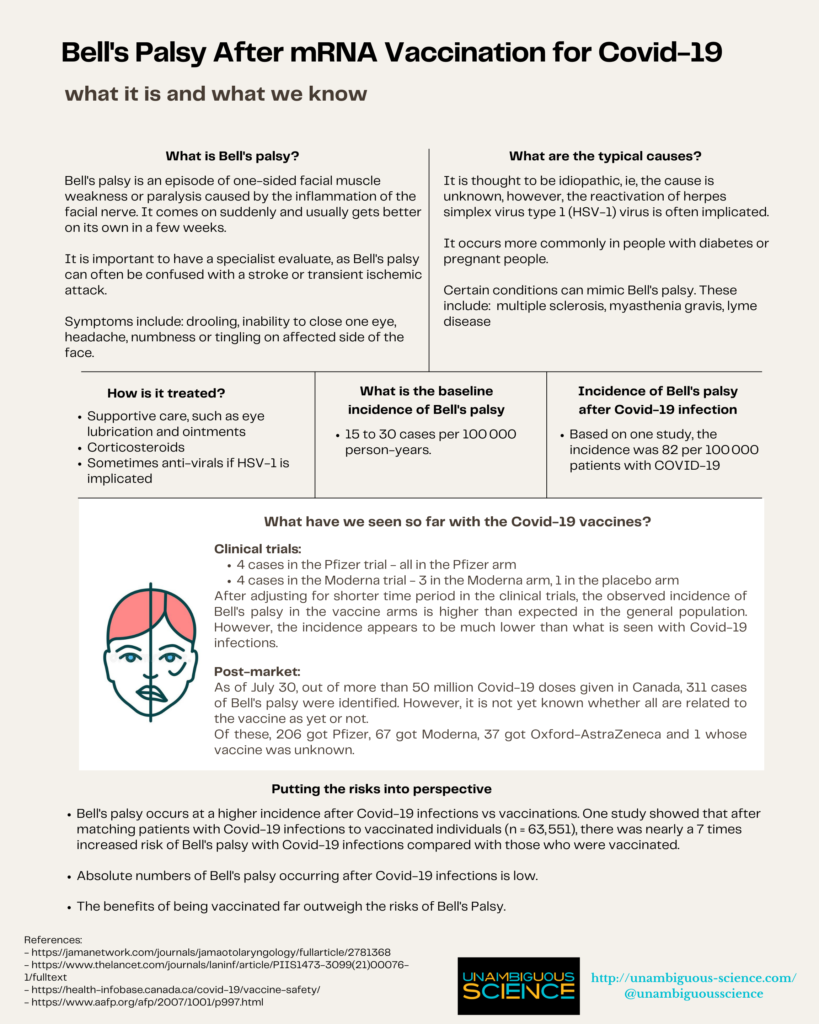Bell’s palsy after Covid-19 vaccinations
Bottom line: absolute numbers low, risk of Bell’s palsy higher with Covid-19 infections. Benefits far outweigh risk.
What have we seen so far?
Clinical trials:
– 4 cases in the Pfizer trial – all in the Pfizer arm
– 4 cases in the Moderna trial – 3 in the Moderna arm, 1 in the placebo arm
After adjusting for shorter time period in the clinical trials, the observed incidence of Bell’s palsy in the vaccine arms is higher than expected in the general population. However, the incidence appears to be much lower than what is seen with Covid-19 infections.
Post-market:
As of July 30, out of more than 50 million Covid-19 doses given in Canada, 311 cases of Bell’s palsy were identified. However, it is not yet known whether all are related to the vaccine as yet or not. Of these, 206 got Pfizer, 67 got Moderna, 37 got Oxford-AstraZeneca and 1 whose vaccine was unknown.
Putting the risks to perspective:
Bell’s palsy occurs at a higher incidence after Covid-19 infections vs vaccinations. One study showed that after matching patients with Covid-19 infections to vaccinated individuals (n = 63, 551), there was nearly a 7 times increased risk of Bell’s palsy with Covid-19 infections compared with those who were vaccinated.
Absolute numbers of Bell’s palsy occurring after Covid-19 infections is low.
The benefits of being vaccinated far outweigh the risks of Bell’s Palsy.
Thank you to Dr Andrew Morris for reviewing and providing feedback!

